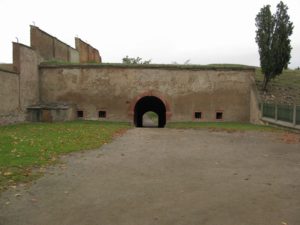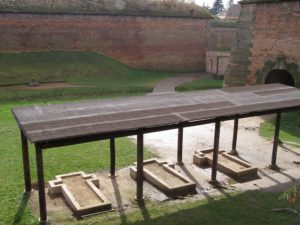The safety repressive authorities of Nazi Germany often introduced euphemistic expressions to cover the true nature of their approach to the population in the controlled areas. One of such terms, in addition to final solution of the Jewish question or evacuation, was also the innocent-sounding phrase of special treatment, in German Sonderbehandlung. If we asked a layperson about the meaning of such phrase, they would hardly guess that in fact it meant murder: execution without a trial based just on the police decision.
The concept of Sonderbehandlung was introduced by Reinhard Heydrich, Chief of the Security Police (SiPo) and the Security Service (SD) in the Reich, in his order called Principles of the Internal Security of the State during the War in September 1939. In relation to the population of the Protectorate of Bohemia and Moravia, Sonderbehandlung could be initially ordered only by SS Reichsführer Heinrich Himmler following the proposals of chief commanders of Gestapo offices in Prague and Brno submitted to the Chief of the Security Police and SD in the Protectorate or to the higher SS and Police Commander KH Frank. However, from September 1943 this way of disposal of inconvenient people did not need the approval of Himmler any more and could be ordered, in the Czech lands, by Frank himself.
Although the executions under special treatment include, for example, the shooting of student officials in Prague Ruzyne on November 17th 1939, executions of Protectorate officers under Sonderbehandlung mostly took place outside Bohemia and Moravia in the first years of the occupation, especially in the concentration camp Mauthausen. However, from 1943 they were also performed on a larger scale within the territory of the Protectorate, especially in the Gestapo prisons, or at places where a hostile action against the Reich had taken place and made the police authorities require the punishment by death right on the spot. In such cases the Sonderbehandlung should have a deterrent effect on the local population.
With 1943 the Police Prison in Terezin also became a place of executions without trial upon the proposal of Prague Gestapo management and approval of K. H. Frank. The first executions were probably carried out in the area of later prison yard IV, before they were finally moved to the shooting range. The first prisoner murdered in this way was most likely a member of the Communist resistance Frantisek Prokop in May 1943. Apart from members of local resistance groups there were also murdered some of the captured members of Czechoslovak military paratroopers and even mentally and physically disabled people, who had got into the clutches of the Gestapo for other reasons though. Altogether there were murdered about 250-300 people here. With a few exceptions the executions were carried out by members of the SS guard company. This unit was not subject to the prison commander Jockel, but to the headquarters of the SS Guards Battalion of Bohemia and Moravia and later to the SS Guards Battalion in Prague. The number of SS guards in the Small Fortress varied from 16 to 100 between the years 1940 – 1945 with 5 commanders successively taking over the position of the Head of the Company. Especially the last commander of the guard company Fritz Vogt became infamous for his sadistic behaviour during the executions performed under Sonderbehandlung. Before a salvo of the firing squad went out, he shot prisoners from his pistol in a way that just painfully wounded them. According to testimony, he also directed the members of the firing squad to charge the guns first with two blank cartridges. Victims were therefore first frightened by harmless shots before finally shot dead with a bullet fired from a sharp cartridge. The largest execution happened just a few days before the liberation (on 2nd May 1945), when 52 people were shot dead (50 resistance fighters, 1 Soviet partisan and 1 informer, who was punished by the Gestapo as a traitor for his efforts to join the resistance before the end of the war just for alibi reasons. The execution was performed despite the fact that the head of the Main Reich Security Office Ernst Kaltenbrunner had ordered their termination during his visit to the Small Fortress on April 19th 1945. However, the Prague Gestapo and KH Frank were of a different opinion. Many of the murdered victims were very young people. (For more about the last execution in Terezin see the Newsletter 2/2010).
Šp



